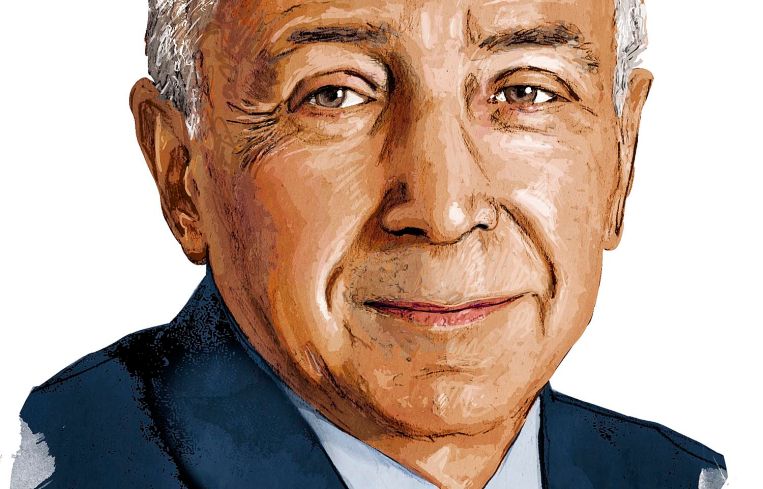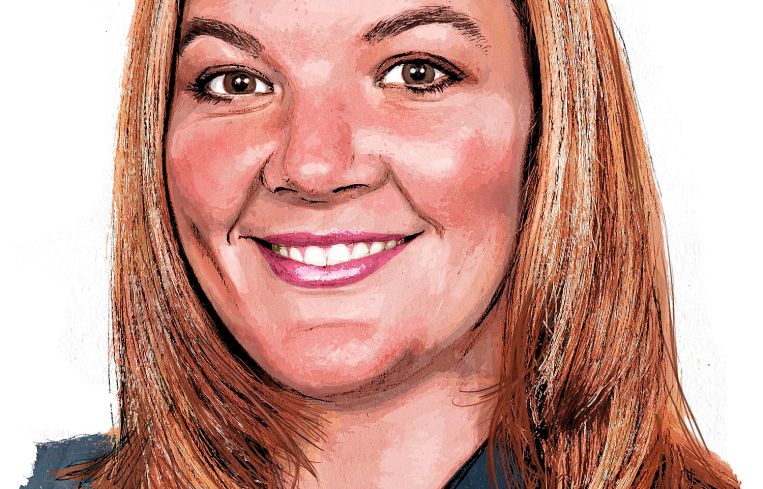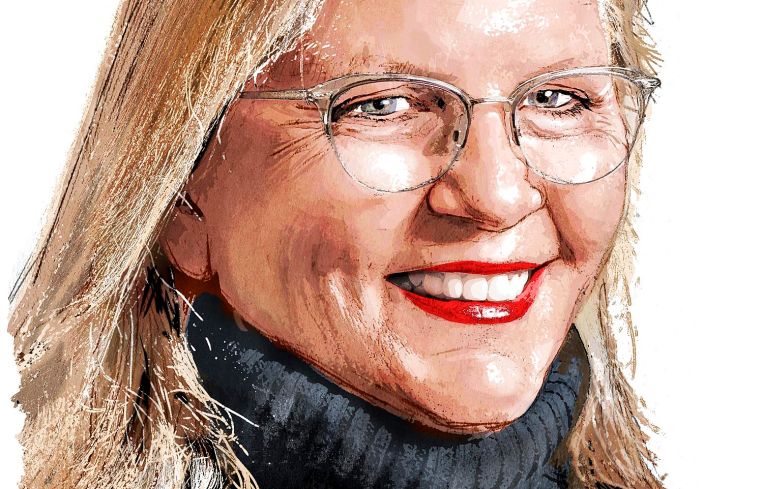The 2022 REBNY Honorees
The Real Estate Board of New York’s annual banquet returned in-person for the first time since 2020 amid lingering challenges for the group and its city.
By The Editors June 24, 2022 10:08 am
reprints







Unlike a war where an armistice can be signed and the conflict immediately declared over, one of the most frustrating parts of COVID has been its lack of finality.
There have been so many false starts. Multiple vaccines were unveiled at the end of 2020, and we all cried à la George Costanza, “We’re back, baby!” It didn’t happen.
Bosses instructed their workers, “Get vaccinated or you’re fired,” and we all expected the infection rates to plummet. Again, we were disappointed.
Theaters reopened. Restaurants stopped demanding proof of vaccination. Ridership increased on the subway. Yet, daily office attendance is still mired at 40 percent less than it was in 2019.
It all feels so … dissatisfying. For every two steps forward, we have to concede a step back.
And, yet, those forward steps are starting to add up.
To wit: The Real Estate Board of New York hosted its annual in-person banquet this week, where nine real estate bigwigs are being honored. Real estate pros who have been attending for years will recognize the significance of this.
REBNY, like many similar institutions, has been through the wringer since COVID-19 first crashed upon these shores. Actually, we should amend that to say that even prior to COVID the 126-year-old lobbying arm of the industry had its work cut out for it.
Back at January 2020’s banquet there was nervousness in the air. A raft of progressive lawmakers had recently been installed in Albany and were churning out legislation that was about to come down hard on real estate: new restrictions on raising rent, new carbon standards for buildings, fewer tax giveaways to developers, and so on.
Two years later, REBNY is still grappling with many of these questions. Carbon-cutting Local Law 97 isn’t going anywhere but some developers are embracing it; Celia Young looked at who’s being creative about the retrofits and technology necessary to meet these new standards.
Many expected that with a housing crisis (the average rent in Manhattan is around $5,000 per month, Douglas Elliman reported a few weeks ago) legislators would either reinstate the 421a tax incentive to boost production of affordable housing, or offer some kind of replacement. But, as Aaron Short reports, the legislative session came and went. No replacement, as yet.
Speaking of rent, one victory that landlords landed this year was a significant rent increase on stabilized units from the Rent Guidelines Board. Rebecca Baird-Remba looked at the implications of this.
And, finally, one of Mayor Eric Adams’ most significant appointments has been Dan Garodnick, the new head of the Department of City Planning, a role that REBNY cares about considerably. We spoke to Garodnick about his plans for the agency.
Yes, there is still plenty to worry about. The office attendance problem, and its effects on retail and restaurants, is real. The fact that Manhattan has become so unaffordable that only the affluent can afford a market-rate apartment is a real problem. But we will also tip our hat as one of the great totems of the real estate business’ past glory — the REBNY banquet — returns. Just please don’t say the word “monkeypox” around us. — Max Gross
Hazel Dukes
President of the NAACP New York State Conference
The John E. Zuccotti Public Service Award
Hazel Dukes, winner of the John E. Zuccotti Public Service Award, has served as president of the NAACP’s New York State Conference for more than 20 years, and is also a member of the NAACP’s national board of directors.
Born in Montgomery, Ala., Dukes grew up surrounded by a loving family who drilled into her that she was better than the ugly slurs Blacks commonly endured in the Deep South at the time.
A graduate of Adelphi University, Dukes worked as a community organizer in New York’s Nassau County in the 1950s, and later spent 25 years working for the New York City Off-Track Betting Corporation until Mayor David Dinkins named her the agency’s president in 1990.
Along the way, Dukes experienced housing discrimination in Long Island’s Levittown, which didn’t allow Black people to live there at the time, and became the first Black resident of the Roslyn Gardens apartments in Roslyn Heights, N.Y., leading to the development of a flourishing Black community there.
Throughout her many years in public service and activism, including with the NAACP, Dukes has campaigned against discrimination.
“I think that the state and the city Human Rights Commission should be very vigilant when people make complaints of discrimination,” Dukes said. “[Landlords] refuse people who can pay the rent because of their skin color or nationality. We get those complaints here at the NAACP. The city and state human rights commissions should investigate to make sure that people are living up to the laws of the state and the city of New York.”
In 2015, Dukes was active in the fight for an improved 421a incentive, writing in the Amsterdam News: “Opportunity is the foundation of mobility in our communities. In New York City, a place of incredible prosperity, all too many have found their foundation crumbling. The opportunity for affordable housing and local jobs lies at the center of building that strong foundation, and, without a viable path forward, we risk harm to our neighborhoods and our communities.”
“I believe in public service,” Dukes said. “I have tried my best as a public servant to make sure that the have-nots or the ones in the middle can always receive resources and services.”
Dukes remains active in the fight for affordable housing, and, thanks to her experience, understands that this is a fight that will never truly be done.
“We’ve accomplished some things, but the housing issue is tricky,” Dukes said. “You cannot make a person who’s a sole owner putting their money into building facilities think about if they’re putting their heart into it. They want to be able to reap benefits, and I understand that. But we have to understand that there are New Yorkers who work three and four jobs to make sure they don’t have to ever go into a shelter. Why is that? Why can’t we be compassionate? Why can’t we find substance and subsidies at the state and city level?” — Larry Getlen
Tom Elghanayan
Chairman and Co-Founder of TF Cornerstone
The Bernard H. Mendik Lifetime Leadership in Real Estate Award
Tom Elghanayan, co-founder of notable development firms TF Cornerstone and Rockrose Development, has played a significant role in the modern version of Long Island City, Queens.
“The most consequential thing we’ve done is the development in Long Island City known as Queens West,” Elghanayan said. “We were the first people there on the waterfront to develop buildings — we developed seven buildings there. Prior to that, the conventional wisdom was that Long Island City could not sustain luxury residential development. We proved that to be wrong, and I think we were the catalyst for the whole boom that’s been going on out there for the last 15 years.”
The Iran-born, Queens-raised Elghanayan holds a bachelor’s from Yale and an MBA from Harvard. He co-created Rockrose Development with his brothers in 1970, and he and brother Fred spun off to create TF Cornerstone in 2009. He currently oversees a portfolio of more than 8 million square feet in New York City and Washington, D.C.
His proudest accomplishment is the massive development of Long Island City.
“We proved that people would live there,” he said. “Long Island City had the highest percentage increase in population of any ZIP code in the entire United States, including Austin and all these other booming Florida cities.”
Today, Elghanayan’s real estate interests encompass more than Long Island City, though.
“We’re developing two buildings on Dean Street in Brooklyn right next to the Barclays Center, which will have 900 apartments altogether. We’ll have them finished by next spring,” Elghanayan said. “We also just started a large development in Long Island City. It was an old Budweiser site — a shipping depot for beer. That’s going to be 1,300 apartments, a large development with a big amenity package: swimming pools, recreational facilities, gyms, study areas, things like that. We’re making a big improvement to the waterfront there. We’ll have that done in maybe two and a half years.”
Elghanayan’s biggest current project is the redevelopment of the Grand Hyatt Hotel next to Grand Central Terminal. When completed, the project — a 2.5 million-square-foot, mixed-use building with 2 million square feet of office space and 500,000 square feet of hotel space — will be the tallest hotel in the Northern Hemisphere, according to Elghanayan.
In a perfect illustration of just how illustrious Elghanayan’s career has been, he casually mentions that his company at one time owned Grand Central Terminal.
“I know it sounds incredible, but we owned Grand Central and net leased it to the [Metropolitan Transportation Authority]. This was part of the bankruptcy of Grand Central 40 years ago,” said Elghanayan, noting that the MTA eventually bought the station back, though Elghanayan kept the air rights.
“We were only really in it for the air rights,” he said. “We sold a good bit of the air rights to JPMorgan — that allows them to build the big building they’re building on Park Avenue — and the rest of the air rights, we’re going to use on the Hyatt site.”
Elghanayan, who enjoys golf and tennis during the rare times he’s not working, still finds the business too fun and interesting to consider retirement. Plus, the fact that it’s a family business continues to make his companies feel like home.
“I’m partners with my brother Fred, and have my son and son-in-law and Fred’s daughter working in the business. So it’s a real family enterprise,” he said. “We see each other often, and there’s a real team spirit. I couldn’t imagine doing anything else other than this.” — L.G.
Hal Fetner, Jeff Levine and David Picket
President and CEO of Fetner Properties; Founder and Chairman of Douglaston Development; CEO of Gotham Organization
The Harry B. Helmsley Distinguished New Yorker Award
REBNY’s Harry B. Helmsley Distinguished New Yorker Award has three winners this year, but it is not a tie. Instead, this is a story about how three commercial real estate professionals and longtime friends, all either CEOs or chairmen of their respective companies, united to do good in a bad situation.
Meeting weekly during the early days of COVID, Hal Fetner, Jeff Levine and David Picket began to discuss the fates of tenants with few resources at their disposal.
“We started talking about how some of the most vulnerable New Yorkers will get hurt,” Fetner said.
“Our affordable tenants were unable to work,” Levine said. “Our residency in our affordable components stayed up in the high 90s, but our rent collections were falling down in some cases to 70 percent. We said, ‘Look, it’s necessary to the future of our city to allow these people not to become evicted because eviction often leads to homelessness and other issues.’ ”
The three brought together a consortium of people on all sides of the housing business and put together Project Parachute, which would raise over $9 million that was directly distributed to residents in need to help them pay their rent and save their tenancy.
The trio raised money from friends in real estate, then secured matching grants from major philanthropies. The money, distributed based on need, eventually provided support to over 3,000 tenants, many of whom were ineligible for traditional voucher assistance.
“We knew that we could not financially fill the gap and pay the rent for these people,” Levine said. “We could pool together a significant sum of money we were able to secure from philanthropic organizations like the Ford Foundation, and then we enlisted the Enterprise Foundation, which has a wide network of housing services. We used them to reach out to home-based providers who have agreements with the City of New York to provide one-shot deals, where the city pays past-due rent, as well as some future rent, to enable people [about to be evicted] to stay in their residence until they can get back on their feet.”
“We thought that if we could provide some kind of a safety net for the people most in jeopardy of losing their homes that we could help relieve the stress of people and families dealing with myriad other issues,” Picket said in an email, “not the least of which was the threat to their health brought on by the pandemic.”
According to Fetner, the future of Project Parachute is under discussion. But whatever happens long term, the three are immensely proud of what they were able to accomplish at a trying time, of receiving an award named for a real estate icon, and of being able to achieve these results together.
“There are New Yorkers living in their apartments today who wouldn’t be but for Project Parachute,” Fetner said. “I am immensely proud of being a part of that with David and Jeff.” — L.G.
Laura Jackson
Senior Vice President, Tax Director, at SL Green Realty
The Young Real Estate Professional of the Year Award
The honor of Young Real Estate Professional of the Year means a lot to SL Green’s Laura Jackson. Asked what she considers her greatest accomplishment, she answers that it’s “hitting the point in my career where I’m able to give back and train others, and bring up others in the industry.”
Before joining SL Green just three months back, Jackson spent 19 years in the real estate group at FTI Consulting, eventually rising to the level of senior managing director and leading the firm’s REIT practice. She also had stints at Deloitte and Arthur Andersen earlier in her career.
“I’ve done a lot of leadership work over the years, whether running our intern program when I was at FTI [or working with] the women’s initiative we had there,” Jackson said. “Being able to train and lead groups of people is really amazing.”
Jackson derives satisfaction in her work by helping steer a company’s direction.
“[This is] not just putting numbers on tax returns, but helping drive the company and figuring out how they can save tax money and use efficient structures to figure out the best tax planning,” Jackson said. “[All of that] has been pretty meaningful to me. Being recognized for the hard work I did at FTI and being invited to come to SL Green and work in-house was a really big honor for me.”
One of Jackson’s more exciting projects involved the development of SL Green’s 1 Vanderbilt, the tallest office building to open in the U.S. during the pandemic.
“Watching this be developed, and staying on track and on time with development even through COVID, it’s been an amazing project to be involved with,” Jackson said. “I played an integral role in helping develop this project from a tax perspective and structure it properly.”
Speaking of the pandemic: Jackson noted that even in the most challenging times, her and SL Green’s desire to help the less fortunate didn’t dissipate. “We helped kick off the Food First Foundation, which donated food to the community and the first responders who helped the city through the pandemic,” Jackson said.
In addition to serving as vice president of the board of Rebuilding Together NYC, a nonprofit for safe and healthy housing in New York City, Jackson founded the She Builds initiative, a group of prominent women in real estate.
“Real estate is a male-dominated industry,” she said. “This was a way for women to get together, find strength in each other, and build each other up. But instead of doing networking events where you socialize, we said, ‘Let’s do something really meaningful for the community.’ So, in 2015, we went to the Women’s Prison Association. We had some of the cast members of ‘Orange Is the New Black’ come out, and we all painted and cleaned up the association’s shelter, where women are reunited with their families after they are incarcerated.”
The initiative helped earn Jackson a New Jersey State Governor’s Award in 2018. Jackson, who lives in Florham Park in the Garden State with her boyfriend and twin daughters, said that one aspect of her career that has made a life in real estate special is helping her discover exactly what she’s capable of.
“I grew up in a family where no one was in real estate, and I was the first person in my family to graduate college,” Jackson said. “Being in real estate and not having family support in that situation makes you stronger. It makes you really nimble, and makes you hungry to advance. I think it’s important to find good mentors in the industry, and then just keep pushing and don’t take no for an answer. It’s a great industry to work in. There’s just so much to learn and so many inspiring people.” — L.G.
Frank Pusinelli Sr.
Senior Executive Vice President and Chief Operating Officer, Operating Assets, at RXR
The George M. Brooker Management Executive of the Year Award
Throughout his 23 years and counting at RXR Realty, Frank Pusinelli Sr., who initially trained as an architect, has overseen the execution of well over $1 billion in construction projects. Given this vast well of experience, this REBNY honor means a lot for Pusinelli.
“What this award means to me is that it’s my peers,” Pusinelli said. “So, it’s the Ed Picciniches of the world, Hank Celestino, Gaston Silva, those types of folks — all people who are doing the same thing that I’m doing, day in and day out. Every name I mentioned already received this award. So, to be in that same company is the real recognition here — that we’re all dealing with the same struggles and we’re all being recognized for the same type of achievements is really important to me.”
One such achievement for Pusinelli was overseeing the purchase and ongoing reimagining of the Starrett-Lehigh Building, a 2.3 million-square-foot creative workplace hub on West 26th Street on Manhattan’s West Side.
“It’s one of the biggest purchases we’ve ever made,” said Pusinelli of the building RXR bought from Shorenstein Properties in 2011 for $940 million. “There were only a few players that could actually bid on those buildings and close, and we were one of them.”
Pusinelli earned a bachelor’s in architectural technology from the New York Institute of Technology (and later an MBA in finance from Fordham) and is a licensed architect with membership in the American Institute of Architects. He still takes pleasure in delving into the architecture and design sides of the projects he works on from RXR’s operations side.
“We invested tremendous amounts of capital into [the Starrett-Lehigh Building],” he said, “and, as an architect, we’ve done a tremendous amount of design there where I’ve hired other architects and we’ve collaborated with them.”
The Starrett-Lehigh Building has been a fulfilling project for Pusinelli in the comprehensiveness of its challenges. “The building continues to take up my entire skill set, whether it’s increasing operating efficiencies, doing design and construction, or dealing with major tenants and making sure they’re satisfied,” he said. “The building is a microcosm of our entire universe, and that’s been great.”
After long focusing on RXR’s commercial side, too, Pusinelli has added residential to his portfolio.
“Now, we have 8,000 multifamily units online in construction, and we’re expanding nationally,” he said. “The fact that the company had the faith and trust in me that I could manage that asset class, and bring the same level of efficiency to it that I’m bringing to commercial, was very rewarding for me. We’re still early in that journey, but it’s been a fantastic opportunity, and a way to broaden my horizons, and the company’s as well.”
Pusinelli lives in Hicksville, Long Island, with his wife of 18 years and their three teenage children. Taking the wide view on his career in real estate, he notes the way it has broadened his perspective on the world.
“I’ve been working since I’m 13 years old,” he said. “I started out like most kids, working in malls and in retail. I wasn’t good at it, because I never would’ve said I’m a salesperson or that I’m interested in customer service. But I found that, over the years, the one constant theme, other than our staff, has been our tenants, and I don’t really call them tenants anymore. They’re customers, they’re clients, they’re people that I’m serving day in and day out. You think you’re focused on property and capital improvements, but you’re really focused on your client every day.” — L.G.
Sarah Saltzberg
Co-Owner of Bohemia Realty Group
The Kenneth R. Gerrety Humanitarian Award
Sarah Saltzberg, winner of the Kenneth R. Gerrety Humanitarian Award for her work on behalf of housing vouchers, has an unconventional origin story for a REBNY board member.
Saltzberg was an actor, and one of the jobs she worked to keep her career going was as the weekend nanny for the children of playwright Wendy Wasserstein. At the time, Saltzberg had begun doing real estate brokerage on the side but was also acting in and contributing to an early version of The 25th Annual Putnam County Spelling Bee, which would ultimately win a Tony Award.
“My dream was always to be an actress and performer, and along the way I was a waitress and other odd jobs you do to make money to support your passion,” Saltzberg said. “I had a friend who got into real estate, and he said, ‘Just do it for a couple of months. You’re going to be very good at it because you’re a natural salesperson.’ I thought, all right, I’ll try it for a couple months. That was about 20 years ago.”
When The 25th Annual Putnam County Spelling Bee started to make waves, Wasserstein’s advice ensured that Saltzberg would get her financial share — and helped establish the business mind that would soon find success in real estate.
“I went to Boston University’s school for the arts, but there was no business class,” Saltzberg said. “We were let loose into the world knowing lots of accents, but not how to manage the business of being an actor. As the show moved forward, we started negotiating the IP agreement. I was very fortunate, because Wendy was very helpful in saying, ‘Listen, this show is going to be a hit, and you are a part of why it’s happening. You deserve to not only have credit, but to be involved in the royalty agreement.’ ”
The successful negotiation — Saltzberg still receives royalties whenever the show is performed — mirrored what she was discovering as a real estate broker.
“In real estate, I was learning how to negotiate, and the power of clear communication and of being not aggressive, but assertive — understanding the power of saying ‘no’ and walking away from a deal,” she said.
Having learned these lessons well, Saltzberg opened Bohemia Realty Group with partner Jon Goodell in 2012. At the time, they had 18 employees, almost all with backgrounds in the performing arts. Today, Bohemia has about 80 brokers.
The firm focused on Upper Manhattan from the start, and Saltzberg became very familiar with housing vouchers. She made it her mission to ensure that her firm knew exactly what was involved.
“We hired a lawyer and spent about $10,000 trying to get an understanding of the nuances of these programs,” Saltzberg said. “There was no one you could call to help you understand how the programs worked on a practical level, and there wasn’t a resource for you to educate yourself. It was so complicated.”
Saltzberg, who serves as co-chair of REBNY’s Fair Housing Committee, arranged meetings and developed relationships with people in the city Department of Housing Preservation and Development. In time, Bohemia Realty became experts in the application of city housing vouchers.
Saltzberg and her staff work with tenants and educate landlords on the many intricate but important particulars of vouchers, helping New Yorkers in need find housing they can afford.
“My agents can show apartments efficiently to voucher holders, and they’re not wasting their or anyone else’s time,” Saltzberg said. “It’s [about] trying to create opportunities for voucher holders to have the level of service that a cash-paying tenant has.” — L.G.
Darcy Stacom
Chair and Head of New York City Capital Markets at CBRE
The Louis Smadbeck Memorial Broker Recognition Award
For a top broker’s award, it’s hard to imagine a better candidate than CBRE’s Darcy Stacom.
Stacom boasts over $145 billion in sales, financings, joint venture, leasehold and development transactions throughout her 40-plus-year career. She has marketed and sold more marquee capital markets assets than anyone else in the U.S. And, she claims both the single largest residential transaction in history, with the $5.4 billion sale of Peter Cooper Village/Stuyvesant Town, and the single largest office transaction in history with the $2.8 billion sale of the GM Building.
By her own account, Stacom’s success has been methodical, making her a perfect role model in how to achieve one’s goals.
“I remember when I was working really hard to crack the $100 million sale [level] and how it just seemed impossible,” said Stacom, who marks 20 years with CBRE this year. “The investment banks dominated the market — Goldman Sachs, Morgan Stanley and JPMorgan all had real estate groups that did this. But the more I worked at it, the more I realized it wasn’t necessarily the size that mattered, it was the approach you took to the transaction.
“So I always had an overwhelming focus on detail and accuracy, and figuring out something unique that hadn’t been thought about on that piece of real estate. That’s what allowed me to move up and complete more and more large transactions.”
Over the years, Stacom, who has spent most of the past two decades in the top 1 percent of CBRE’s global producers, has led the charge on five transactions of over $2 billion each. Her achievements over just the past few years include helping broker the sale of 441 Ninth Avenue for $1.022 billion — the largest New York office sale since the onset of COVID — and the sale of the St. John’s Terminal building to Google for $2.1 billion. In 2020, Stacom won, along with CBRE’s Bill Shanahan, REBNY’s Ingenious Deal of the Year award for the $900 million sale of 330 Madison Avenue.
“I’m really proud,” said Stacom of her wide-ranging success. “People come to me because they know it doesn’t matter the size [of the asset]. If it’s smaller or if it’s enormous, they’re going to get a very detailed, very unique approach of looking at the real estate.”
Another example of a complex Stacom transaction was the dissolution starting in 2010 of the $2.6 billion Helmsley Trust portfolio.
“That was done over a period of six years,” she explained. “There were five trustees, and each trustee had a lawyer, and then the trust itself had a lawyer; and we always had to make sure everything was secure with the state attorney general’s office. Many of the documents were arcane. There were just none of the typical rights, and, in fact, a lot of it was very vague as to what should or should not be able to be accomplished, since these were mostly partial interests in pieces of real estate. So that was really, to me, a series of transactions, but all under one umbrella that was very defining.”
Stacom, who lives in Manhattan’s Sutton Place with her husband, has also been involved in numerous philanthropic endeavors throughout her career, including serving as co-chair of the board of the New York Restoration Project, which manages 52 community gardens and more than 80 acres of parkland across New York City, and serving on the board and executive committee for Phipps Houses, the largest not-for-profit owner of affordable housing in NYC.
She sees this giving back as a way to thank New York City for a lifetime of opportunity.
“I wouldn’t have what I have if it weren’t for New York City,” Stacom said. “So my husband and I do everything we can to give back, and we focus super-aggressively on New York City. Anyone who has a big career in New York that does not give back here is not recognizing something that they should be doing.” — L.G.


